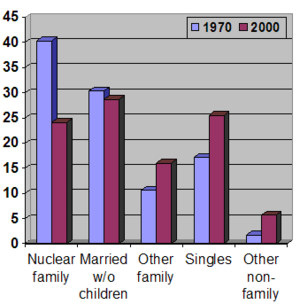My Multi-cultural Neighbourhood
Focus Question
- What cultures make up your community?
- How/why did they come to this area?
- What do we know about these cultures and how do they impact on our community?
- How have these influenced/ enhanced our lives?
Census 2011: Aboriginal and Torres Strait Islander
Population in Queensland
More than one-third (34.2%) of Queensland’s Aboriginal and Torres Strait Islander population lived in the Brisbane Indigenous Region.
Education has recorded in schools, indigenous students results are lower
Exposition
- Looking at community/cultural backgrounds, the indigenous cultures have differed from white man and impacted on Australian people in various ways

 beliefs/practices beliefs/practices

food

clothing

  |
| Family structure |
 |
Housing
Indigenous influences on White Australian people are in their understanding of :
Land - at the core of belief

APY Lands, Ku Arts Tours. Courtesy of Ananguku Arts.
Land is fundamental to the wellbeing of Aboriginal people. The land is not just soil or rocks or minerals, but a whole environment that sustains and is sustained by people and culture. For Indigenous Australians, the land is the core of all spirituality and this relationship and the spirit of 'country' is central to the issues that are important to Indigenous people today.
Diversity- Location and language, Aboriginal and Torres Strait Island people identify themselves through their land areas, their relationships to others and their language and stories- which may be through ceremony, arts, family, religion and sport. Cultural heritage is passed on from one generation to another.
Ceremonial performances are seen as the core cultural life that bring together all aspect of Indigenous art, song, dance decoration, sculpture and paintings.
Aboriginal Tourism has recently emerged as an industry. A diversity of tours and experiences that promote Aboriginal culture and lifestyle are available for travellers throughout Australia. The experiences range from organised tours to performances of dance, the purchase of traditional Aboriginal artefacts and an opportunity to stay on Aboriginal land to experience the daily lives of Aboriginal people.
If we want to see change in Aboriginal communities we need to create a model that is guided by sound community development principles, including:
• Understanding the community;
• Taking the community through a process to determine its future;
• Helping the community fund and deliver that future; and
• Handing total authority back to the community.
The Missions
"So the sad thing about it all was the missionaries didn't realise that we already had something that tied in with what they'd brought to us. They saw different as inferior, and they didn't ask us what it was that we had. And it's very sad because if they had asked... things may have been different today.
Our people, before the white man came were very spiritual people. They were connected to land and creation through the great spirit, there was a good great and a great evil spirit... And Satan was the great evil one. So there wasn't much difference in what the missionaries brought and what we already had..."
Wadjularbinna Doomadgee, Gungalidda Leader, Gulf of Carpentaria, 1996
|
|
|
|



 beliefs/practices
beliefs/practices





No comments:
Post a Comment